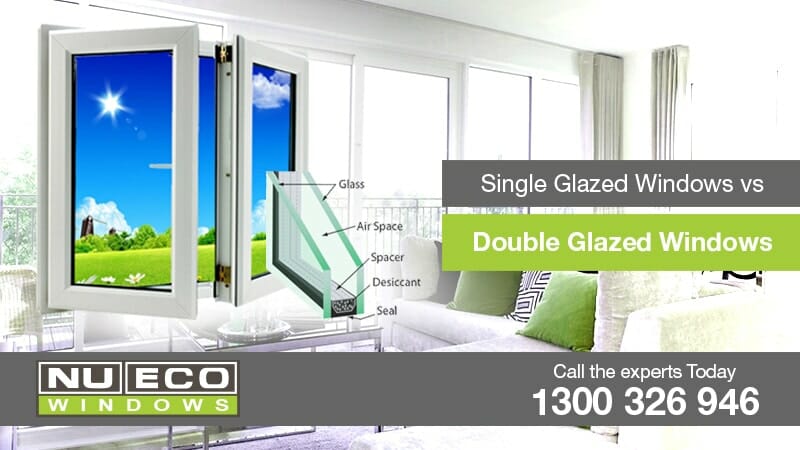What’s your house like?
Cold in winter!
Hot in summer!
Noisier than the Monash!
Nu-Eco can help!

Older windows can be a huge source of heat loss, and many people looking to upgrade their windows are concerned with energy efficiency as well as the up-front costs. The main difference between single glazed windows vs double glazed windows is obvious: instead of one pane of glass, a double glazed window features two panes of glass separated by a vacuum. The result: better sound insulation and noticeable energy savings while still providing plenty of natural light. Trying to choose the right window solution can be confusing when there are so many options, but the double glazing is often the winner against alternatives like laminated glass and Low-E glass when it comes to energy savings.
Double Glazing vs Single Glazing Cost
To fully understand the differences of double glazing vs single glazing cost, it’s important to consider the energy savings offered by double glazed windows. Although they are more expensive than single glazed windows, even the most basic double glazed window can save you 20% or more on energy usage depending on the climate. Consider those savings over the 20 or more years your windows will last, and the difference is staggering! For top-to-bottom durability and energy efficiency, uPVC windows with double glazing are hard to beat.
Laminated Glass vs Double Glazing
Laminated glass windows are available in single glazed and double glazed models, so comparing laminated glass vs double glazing price ranges isn’t totally straightforward. Laminated single glazed windows are generally less expensive than non-laminated double glazed windows, but don’t provide the same level of energy efficiency. Laminated glass is impact-resistant and resists shattering when broken, making it safer to clean up. If you’re concerned about burglary, glass cutters can’t be used on the laminated glass from the outside. Laminated glass also reduces sound transfer, but so does double glazing.
If the upfront price is your biggest concern in deciding on laminated glass vs double glazing, laminated glass is the cheaper choice. In sunny climates, the UV-blocking property of laminated glass can be helpful, too. However, double glazing still wins out in reducing thermal transfer and saving you money on energy costs.
Low E Glass vs Double Glazing
How does double glazing measure up against the Low-E glass? A Low-E coating can keep UV and infrared rays out (helping keep the interior cooler) or let heat in to provide passive heating to the interior. Here in Australia, we usually prefer the heat-blocking style of Low-E glass, but homes and buildings designed with the heat of summer and chill of winter in mind may not benefit much from the Low-E glass.
Choosing low e glass vs double glazing means that heat flow from the outside to the interior will be reduced even when you might want it, like during winter. Double glazing allows for greater solar heat gain while also providing insulation, so you don’t have to “fight” your windows to maintain an ideal temperature inside.
Combining uPVC with double glazing, as with Nu-Eco uPVC Double Glazed Windows, gives you an amazing combination of sound insulation, energy savings, and bright light transmission.

